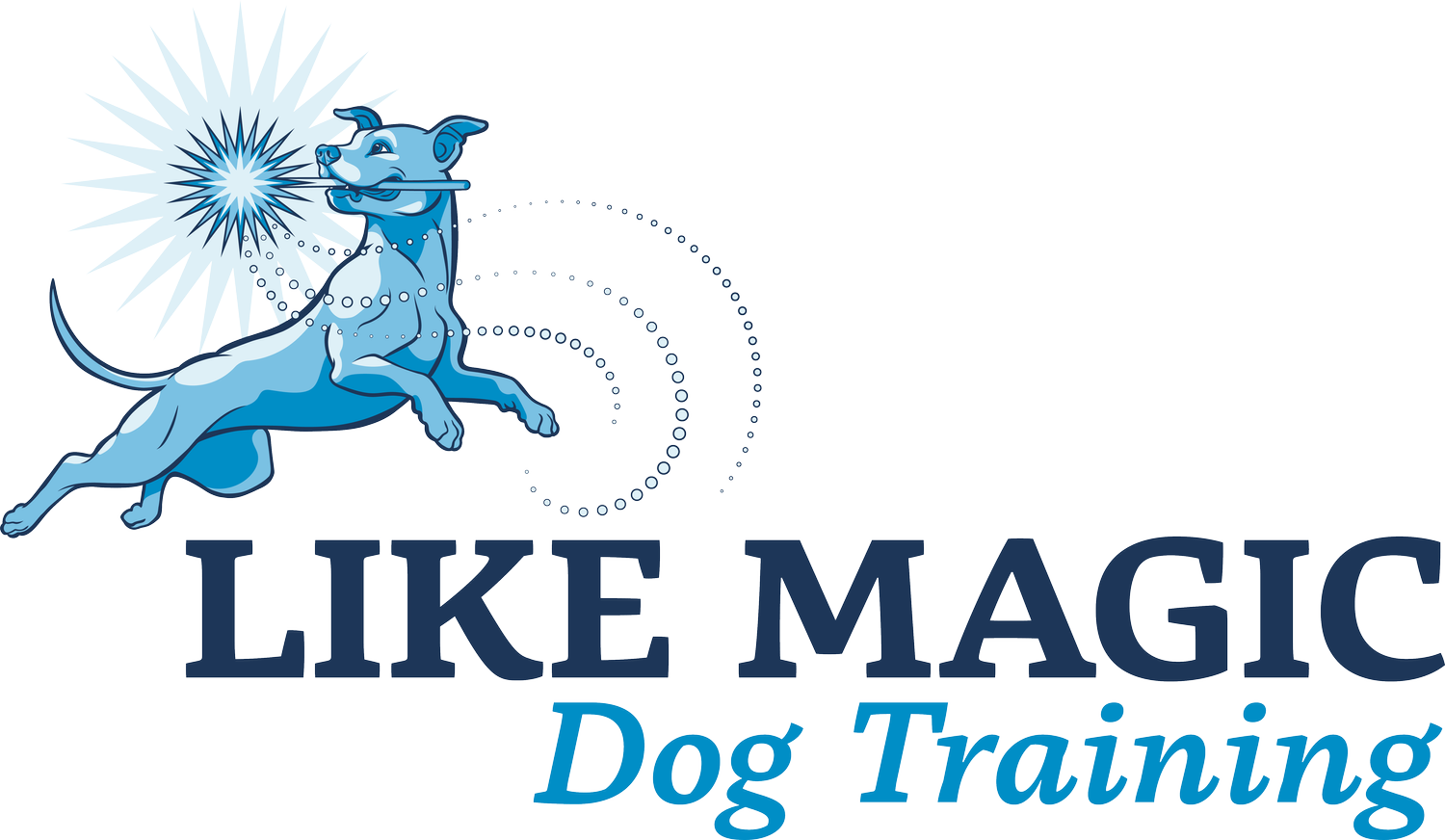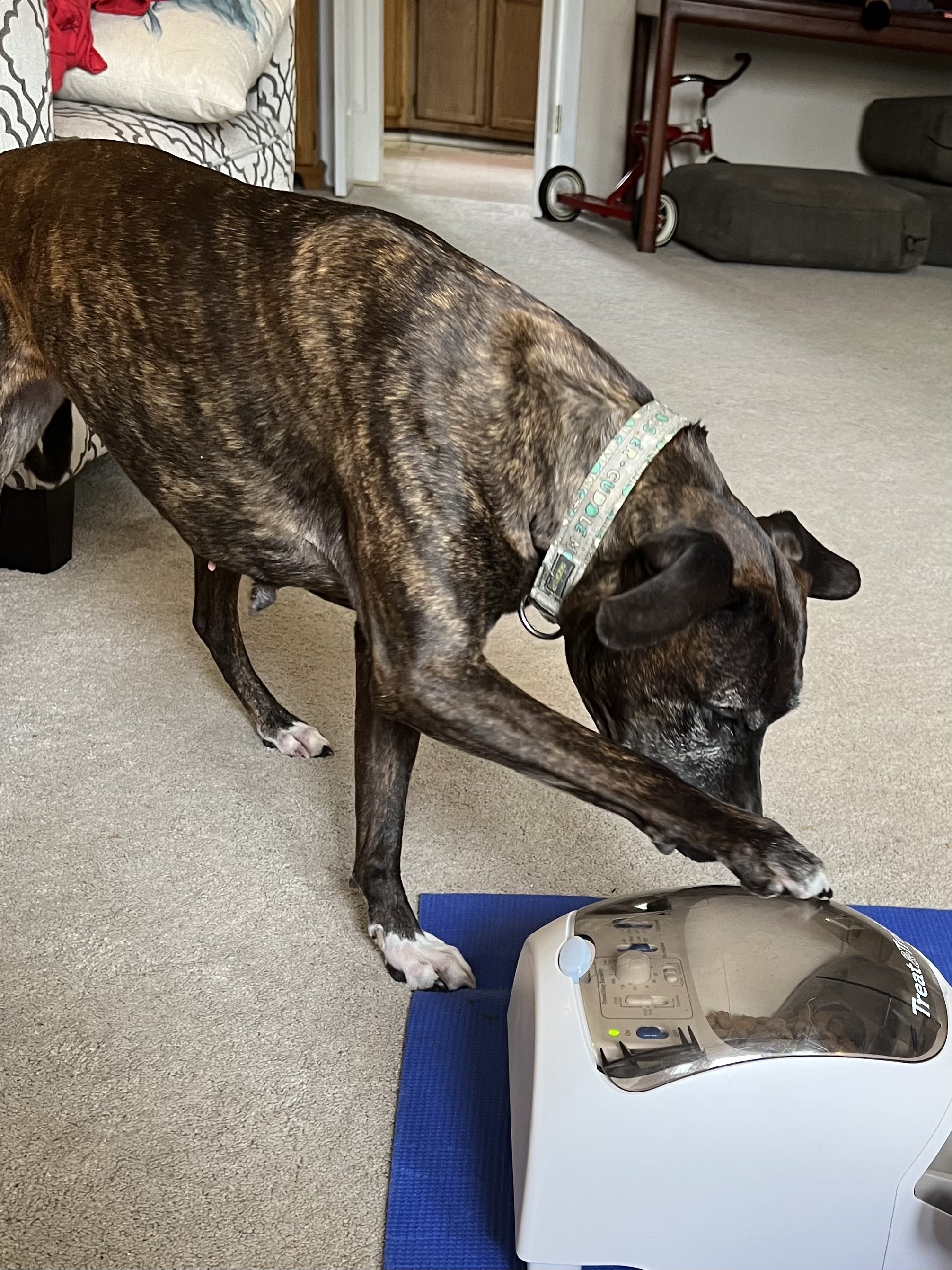No Ribbons for Reactivity
There’s no ribbons for reactivity. You’re not prepping for a trial, or a show. Your criteria for behavior is important, but only so far as it serves your goal; decreasing your dog’s threshold over time and ultimately improving your dog’s (and your own!) quality of life.
Especially if you’ve worked hard with your dog, and your dog has a lot of skills on the table, this can be a hard concept to grasp. Of course we know we’re not competing for every day life, but there’s a challenging narrative to struggle against about not “needing treats” for your dog and that, once learned, they should just “do the behavior.” Plenty of well-meaning trainers remind you that your criteria needs to be clear and once you’ve established criteria for a behavior, you need to be consistent with what you’re asking for.
Across the board, this isn’t always realistic. Dogs - even those without significant behavior challenges - get overwhelmed, overstimulated, or just have a bad day. Our dogs, we increasingly are aware, experience a range of emotions. It stands to reason that emotional state, like in humans, somewhat dictates or at least influences capacity for behavior.
In theory, clear criteria should be your goal. Especially if preparing a performance - for a specific event, for a show, for a trial - being clear about what you need your dog to do and avoiding a reliance on treats is important to your success. You want to recreate the picture you will need in a trial as much as possible. But day to day life isn’t leading up to a single event. The context of the performance is always changing and, in the case of a reactive dog, the experience and their capability can vary greatly from day to day.
So what can you do when your reactive dog needs help? If you’re asking for a behavior, you first want to make things easier, and if they still can’t perform, switch to management mode.
Reactivity is a bit different than manners training. There’s less reliance on cues and more reliance on adjusting your lifestyle to give your dog the space (physical, temporal, emotional) to cope with their BIG feelings . There’s a perspective shift necessary to go from asking your dog to do something, to teaching your dog how to adapt to their triggers. And there’s a lot more dependent upon your ability to address the emotions evident in the behavior than insisting on the consistency of one specific behavior.
My general progression from “working on building resilience to triggers” to “managing the environment for the most positive experience possible” goes something like this:
Look at That Variations
Look at That - this is the hardest behavior to ask your dog to do when faced with a trigger. Rewarding your dog in a known pattern of looking at their trigger, and then looking back to you means they both are able to handle the trigger itself, but that they also remember the pattern you’ve worked hard to help them learn.
Look at That (Then Enrichment) - if they struggled to look back at me but managed it, I’m going to switch to steps 4 or 5 and do a treat scatter or another form of enrichment my dog enjoys, rather than asking them to continue the pattern and look back.
Look at That (Easy Mode) - if my dog couldn’t look back at all? I’m marking “yes” before they’ve turned their head back and rewarding them back towards me, even if it means sticking the treat right in their nose. Am I changing the criteria? Yes. Am I luring after they’ve already learned the behavior? HELL yes. Right now what matters more is keeping the experience positive for my dog than keeping this behavior crisp. We will work on the pattern again later on - right now, I’m focused on my goal; setting up my dog so they don’t need to react.
Getting Distance
This Way - I’m typically only going to break this out when I run into a trigger and I already know we are too close to play any variation of Look at That. If we’ve already played and are struggling, I want something more directly enticing.
Ready Get It - when my dog is struggling with Look at That, a behavior they know well, I know it’s time to build distance. My next step is going to be looking for attention - any attention - and tossing a treat away from the trigger for my dog to chase and pounce on, moving them backwards a ways before I try again. Depending on the amount of space I can make, I might continue to the next section, or I might go back and play another variation of Look at That.
Magnet Hand - it seems obvious that a dog will follow a handful of cookies, however, this isn’t always the case. Practicing your dog sticking close to your treat hand with duration can help move them out of sticky situations without the need for physically moving them to create distance.
Doing Something - Anything - Else
This can be literally anything your dog finds enriching - tricks, attention games, tug, hand targeting - whatever your dog finds super enjoyable and engaging. The point here is not to look over or pay attention to the trigger at all. You’re going to do this when either they haven’t succeeded at playing Look at That, you can’t build enough distance that you’re confident in their LAT game, or your dog has already dealt with a lot of triggers and needs a break. My personal preference and the most popular amongst dogs seems to be:
The Everlasting Treat Scatter - Not only a treat scatter, but ones where treats keep dropping on the ground while my dog’s head is still down. Sometimes bouncing off their nose and sometimes a little further away so they have to hunt, this is all about keeping the dog sniffing while the trigger passes us by (no worries, the dog definitely still knows the trigger is there!).
Last Resort - Move The Dog
Sometimes, none of this will work. Hopefully rarely, your dog will already be mid-reaction and unable to be distracted with even their favorite things. When that happens, walk up your leash (remember - climb a rope, don’t reel in a fish), grab your dog’s collar or harness, and walk them away. They can have treats as soon as they are able to take them (but keep walking), but for now, just remove them from the situation. What we don’t want is for our dogs to sit in whatever feelings are causing this overblown reaction, we want to be able to introduce a new emotional state as soon as possible. If they recover quickly, we can try one of the other exercises at a distance, but most likely after a moment like this, I’m going directly into an everlasting treat scatter because now we’re all about recovery.
There’s no ribbons for reactivity - but there are for reactivity class! If your dog needs to be introduced to foundations for reactivity work and you’re not sure where to start, reach out about our options for reactivity students with private training or Drama Class online.
If you’ve already taken a reactivity course and would like the opportunity for in person practice, check out our in-person Drama Class. This class is intended for reactive dogs of all levels of progression who have taken Drama Class Online or an equivalent reactive dog class or private session package, and aims to provide real-world application, coaching, and practice.


